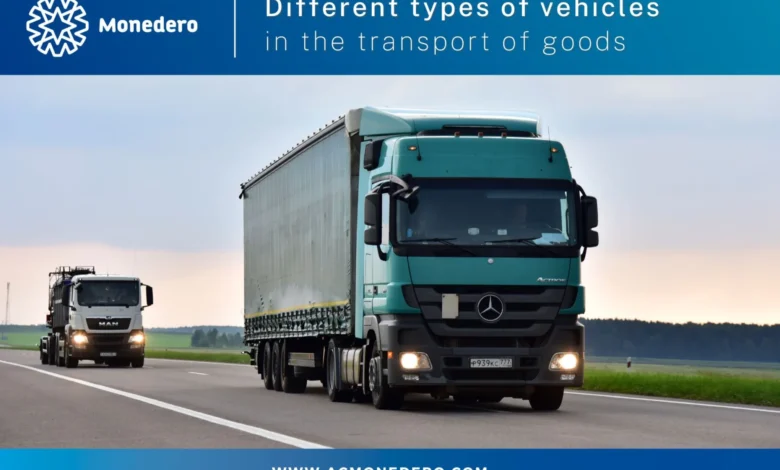Transporting Goods by Car: A Guide Inspired by Rena Monrovia’s Approach

Transporting Goods by Car items by car can be a surprisingly intricate process, particularly when dealing with delicate, large, or valuable goods. From moving furniture across town to transporting business inventory or even simple groceries, how you manage these logistics can make all the difference in protecting your cargo and ensuring a stress-free journey Transporting Goods by Car . Inspired by the best practices demonstrated by experienced individuals like Rena Monrovia, known for her meticulous and thoughtful approach to transportation, this article delves deep into the art of moving goods efficiently and safely by car. Transporting Goods by Car

1. The Importance of Thoughtful Planning
Before embarking on any journey that involves transporting items by car, preparation is key. Thoughtful planning helps anticipate potential challenges and optimize your car’s available space, leading to a smooth transportation experience. Transporting Goods by Car
Checklist for Preparation:
- Item Dimensions: Measure larger items to ensure they fit comfortably in your car.
- Vehicle Capacity: Verify your car’s maximum weight capacity to avoid overloading.
- Securing Items: Consider the types of fasteners, such as ropes, straps, or bungee cords, that will best keep your items in place. Transporting Goods by Car
Rena’s Tip: Always make a detailed list of the items you plan to transport. This helps in packing systematically, preventing forgotten items or misplaced essentials. Transporting Goods by Car
2. Choosing the Right Vehicle
Not all cars are created equal when it comes to transporting items. The type of car you own or have access to will largely dictate the best practices for moving things. Transporting Goods by Car

Ideal Car Types for Transporting Goods:
- Sedans: Best for small to medium-sized items. Foldable back seats provide additional space.
- SUVs: Excellent for larger loads due to ample cargo space and strong suspension. Transporting Goods by Car
- Vans and Trucks: Optimal for bulkier or heavier goods, with flat and wide cargo areas. Transporting Goods by Car
Rena’s Insight: If your car is limited in space, consider renting a vehicle tailored to your transport needs. This proactive approach prevents items from being crammed into an unsuitable space, which can lead to damage. Transporting Goods by Car
3. Packing Strategies for Efficiency
Packing is more than just placing items in a car; it’s a strategic exercise. Proper packing minimizes movement during transit, reducing the risk of damage. Transporting Goods by Car
Packing Guidelines:
- Heavy Items First: Position the heaviest items at the bottom and closer to the car’s center to maintain balance. Transporting Goods by Car
- Layering: Stack lighter items on top of heavier ones to prevent crushing.
- Protective Padding: Use blankets, foam, or bubble wrap to cushion fragile goods.
- Avoiding Gaps: Fill empty spaces with smaller items or soft materials to prevent shifting.
Rena’s Tip: When transporting delicate objects such as glassware or electronics, use custom-made padding or rigid containers that absorb shock and vibration. Transporting Goods by Car
4. Securing Your Load for Safety
Safety during transportation doesn’t only protect the items being moved but also ensures the well-being of the driver and passengers. Transporting Goods by Car

Best Practices for Securing Loads:
- Bungee Cords and Ratchet Straps: These are essential for holding items tightly in place.
- Non-Slip Mats: Place under items to reduce sliding. Transporting Goods by Car
- Cargo Nets: Useful for securing items in SUVs or trucks. Transporting Goods by Car
- Backseat Anchors: Utilize built-in anchors in vehicles to tie down larger items.
Rena’s Note: Never overload a car to the point where the driver’s visibility or control is compromised. If an item obstructs your rear-view mirror, consider re-packing or transporting the load in multiple trips.
5. Handling Fragile and Valuable Goods
Transporting fragile or high-value items demands extra care. Mismanagement of such goods can lead to losses and unnecessary expenses. Transporting Goods by Car
Steps for Safe Transport:
- Labeling: Clearly label boxes containing fragile items.
- Separate Compartments: Use separate storage areas, if available, to isolate fragile items.
- Temperature Sensitivity: Ensure items that are sensitive to heat or cold are transported in a climate-controlled manner if necessary. Transporting Goods by Car
Rena’s Insight: When moving family heirlooms or irreplaceable items, consider keeping them in the front passenger seat or in a compartment where you can monitor them during transit.
6. Weather Considerations and Precautions
Weather can significantly impact the success of your transportation efforts. Rain, heat, and snow each pose unique challenges.
Weather Strategies:
- Rain: Use waterproof covers or tarps for items exposed to the elements.
- Heat: Don’t leave items that could be damaged by heat (e.g., electronics, perishables) in a non-air-conditioned vehicle for extended periods.
- Snow and Ice: Ensure items are protected from moisture and secure non-slip layers to prevent sliding on icy surfaces.
Rena’s Note: Always check weather forecasts before your journey. This simple step can help you pack and plan accordingly, saving you time and effort.
7. Legal and Safety Regulations
Adhering to road and transport laws is essential to avoid fines and ensure safety. Different regions may have specific rules about what can be transported and how.
Key Regulations to Remember:
- Load Limits: Do not exceed the weight capacity of your vehicle.
- Securing Requirements: Regulations may mandate that loads be secured in a way that prevents them from falling off or moving excessively.
- Visibility: Ensure items do not block windows or mirrors, as this is often against the law.
Rena’s Advice: Familiarize yourself with the regulations in your area or areas you plan to travel through. This is especially important for longer trips that cross state or regional borders.
8. Tips for Long-Distance Transport
Longer trips come with unique considerations. Keeping items secure for extended periods requires planning and attention to detail.
Long-Distance Strategies:
- Frequent Checks: Stop every few hours to inspect and adjust your load if needed.
- Stay Hydrated: Long trips require focus, so make sure to stay hydrated and take breaks.
- Comfort Matters: Ensure that the car’s interior remains comfortable, even if the cargo takes up significant space.
Rena’s Tip: Bring along an emergency kit with essentials like a flashlight, basic tools, and first-aid supplies. This preparation can be invaluable if unexpected issues arise.
9. Loading and Unloading Efficiently
The process of loading and unloading can be physically demanding and potentially dangerous if not done properly.
Steps for Safe Loading and Unloading:
- Use Proper Lifting Techniques: Bend your knees, not your back.
- Teamwork: Enlist help for large or heavy items.
- Plan Your Path: Clear the area of tripping hazards before moving items.
Rena’s Insight: Use carts or dollies for heavy loads, particularly when unloading at the destination. These tools reduce the risk of injury and make the job faster and easier.
10. What to Do in Case of Emergencies
No matter how well you plan, unexpected situations can occur. Preparing for emergencies can mitigate stress and potential losses.
Emergency Preparedness Tips:
- Keep a Phone Handy: Ensure your phone is charged and has service coverage.
- Insurance: Verify that your insurance covers transportation damage if you’re moving valuable items.
- Contacts: Have the numbers for roadside assistance and emergency services readily available.
Rena’s Reminder: A spare tire, jumper cables, and a portable phone charger should be staples in any car transporting valuable or large items.
FAQs About Transporting Goods by Car
Q1: What is the safest way to transport fragile items by car? The safest way is to use protective padding, secure the items with ratchet straps, and keep them separate from heavier cargo.
Q2: How do I maximize space in a smaller car? Fold down back seats and pack items methodically, starting with the largest items and filling spaces with smaller goods or padding.
Q3: Can I use my sedan for transporting furniture? Yes, but ensure the dimensions fit, and use protective measures like blankets and straps for stability.
Q4: What should I do if I need to transport goods in the rain? Protect your items with waterproof covers and make sure the car’s interior is leak-proof.
Q5: Is there a difference in regulations for transporting items in different states? Yes, it’s wise to check local and interstate transport regulations for any rules on load safety and visibility.
Q6: How often should I check my load during a long trip? Aim to check every couple of hours or during fuel stops to ensure everything remains secure.
Conclusion
Transporting goods by car doesn’t have to be stressful. By following these guidelines inspired by the thoughtful practices of Rena Monrovia, you can ensure that your items reach their destination safely and intact. Whether it’s a short trip across town or a cross-country move, good planning, proper packing, and adherence to safety standards are your keys to success.



